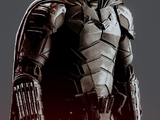Pencak Silat is an umbrella term for a class of related Indonesian martial arts. In neighboring countries the term usually refers to professional competitive silat. It is a full-body fighting form incorporating strikes, grappling and throwing in addition to weaponry. Every part of the body is used and subject to attack. Pencak silat was practiced not only for physical defense but also for psychological ends.
Silat is a collective word for a class of indigenous martial arts from the geo-cultural area of Southeast Asia, more precisely in the Malay Archipelago, a region known locally as Nusantara. While the word silat is widely known throughout much of Southeast Asia the term pencak silat is used mainly in Indonesia. Pencak silat was chosen in 1948 as a unifying term for the Indonesian fighting styles as a compound of the two most commonly used words for martial arts in Indonesia. Pencak was the term used in central and east Java, while silat was used in Sumatra, Malay Peninsula and Borneo. In Minang usage, pencak and silat are seen as being two aspects of the same practice. Pencak is the essence of training, the outward aspect of the art which a casual observer is permitted to witness as performance. Silat is the essence of combat and self-defense, the true fighting application of the techniques which are kept secret from outsiders and not divulged to students until the guru deems them ready. While other definitions exist, all agree that silat cannot exist without pencak, and pencak without silat skills is purposeless.
The earliest evidence of pencak silat being taught in a structured manner comes from 6th-century Riau from where it spread to the Minangkabau capital in West Sumatra. Military officers called hulubalang acted as bodyguards to the king or yam tuan. Minang warriors were skilled horsemen and expert bladesmiths, producing arms both for their own use and for export to Aceh. Traditional Minang society was based around matrilineal custom, so pencak silat was commonly practiced by women. As pencak silat became widespread in Srivijaya, the empire was defeated by the Tamil Cholas of south India in the 13th century. The Tamil stick fighting art of silambam is still the most common Indian fighting system in Southeast Asia today.
See also:
References[]
-

Richard Drakunovski (New Earth) -

Bruce Wayne (The Batman Movie) -

Oliver Queen (Arrowverse) -

Wam Wam (New Earth) -

Henry Feder (Prime Earth) -

Sidney Shiang (New Earth)
All items (6)






